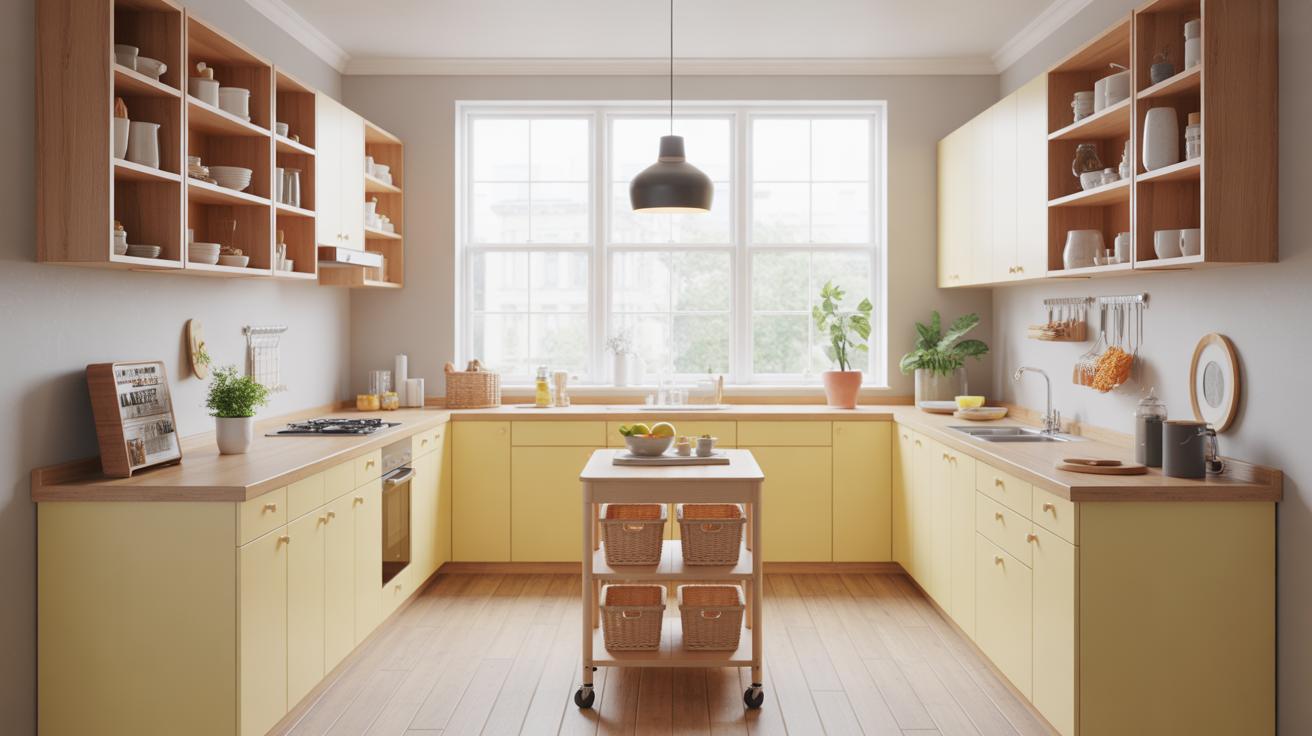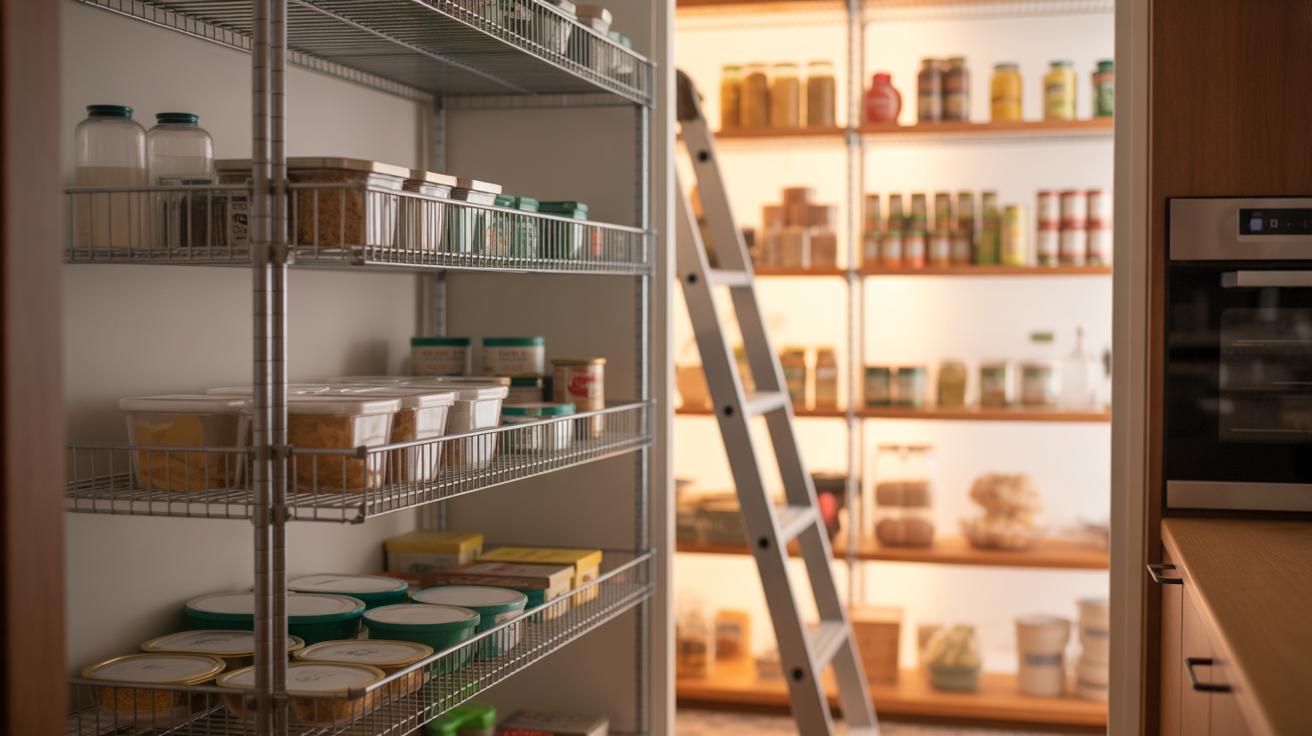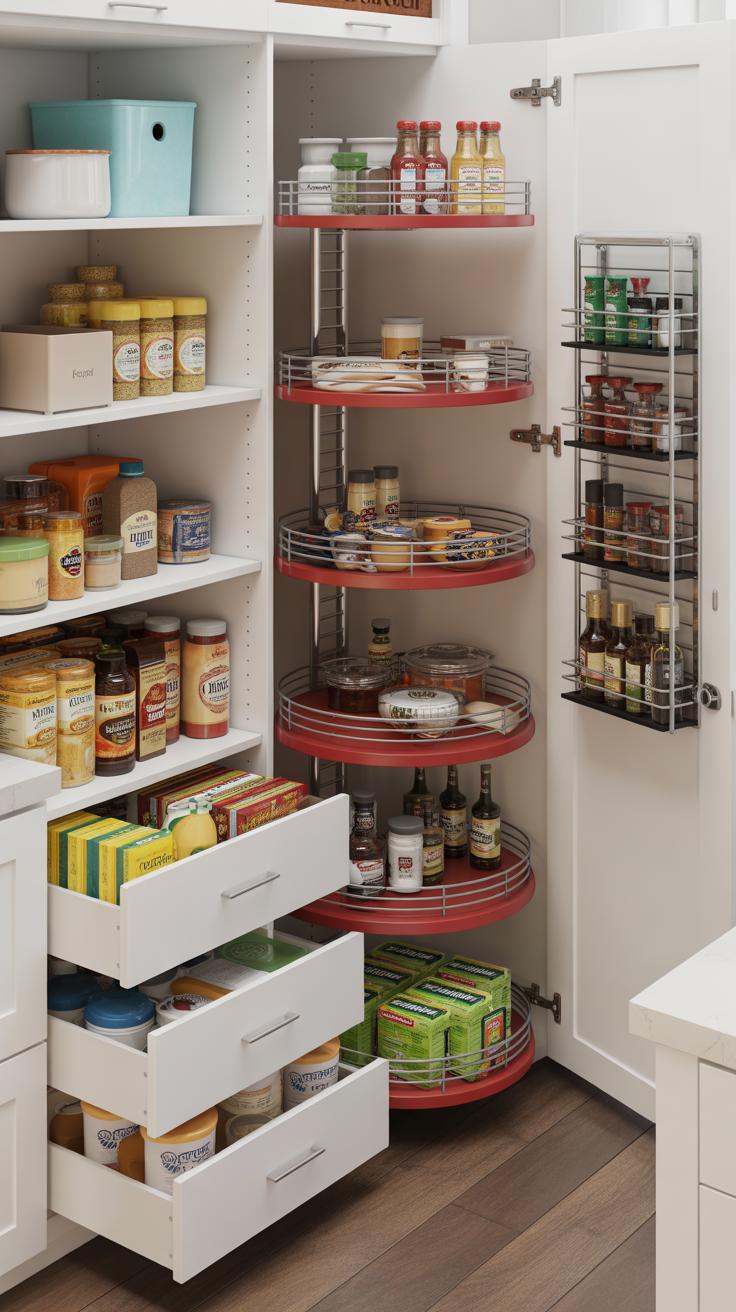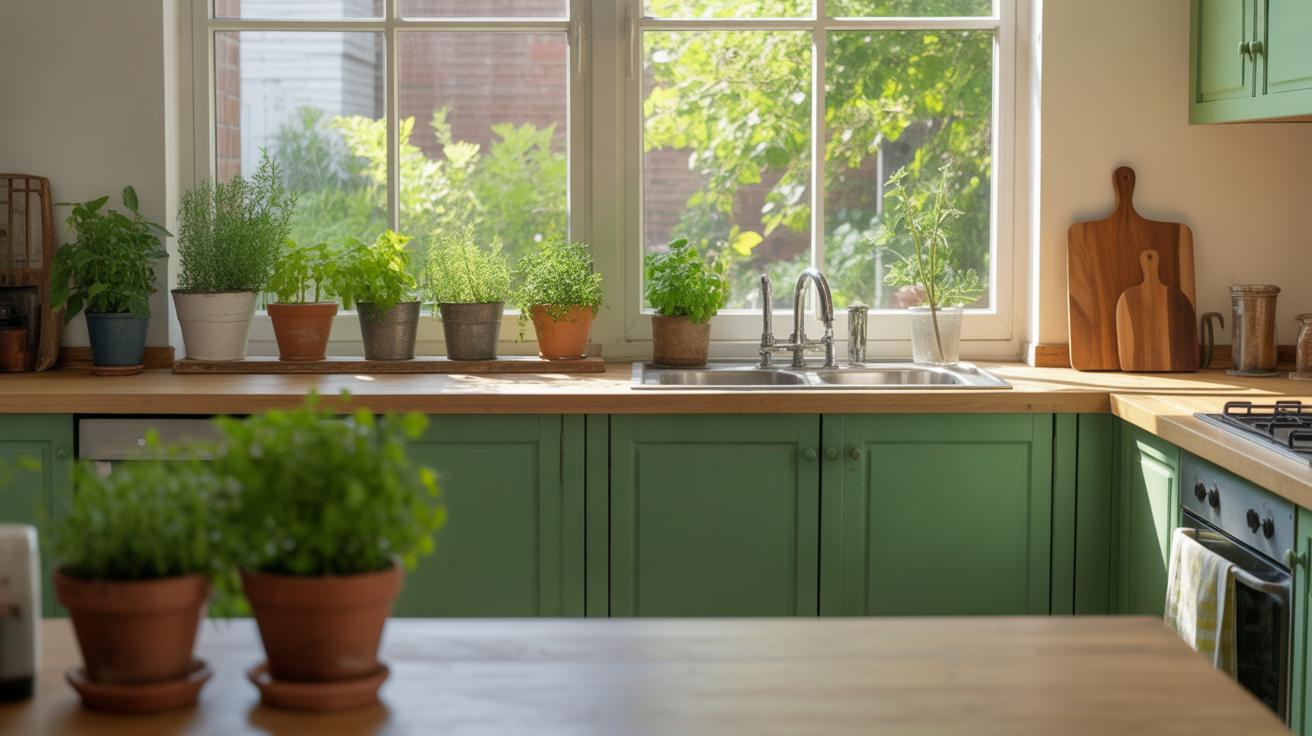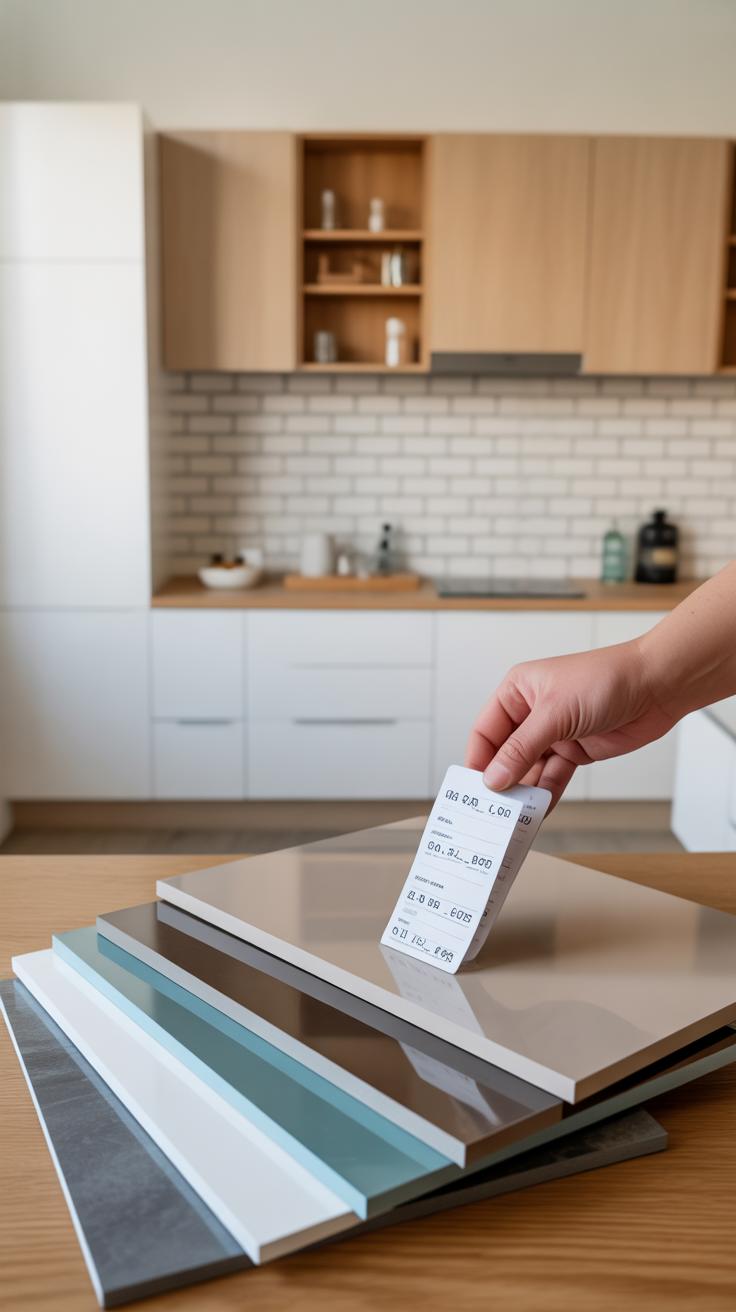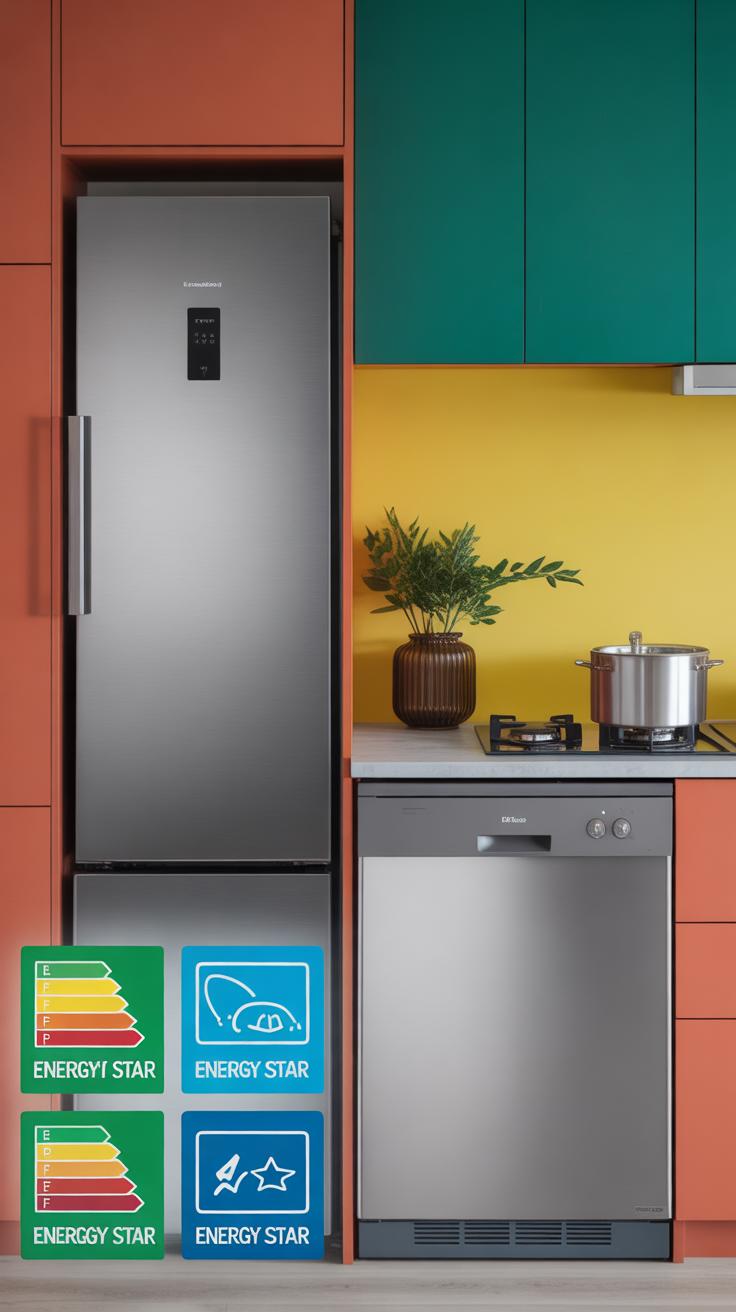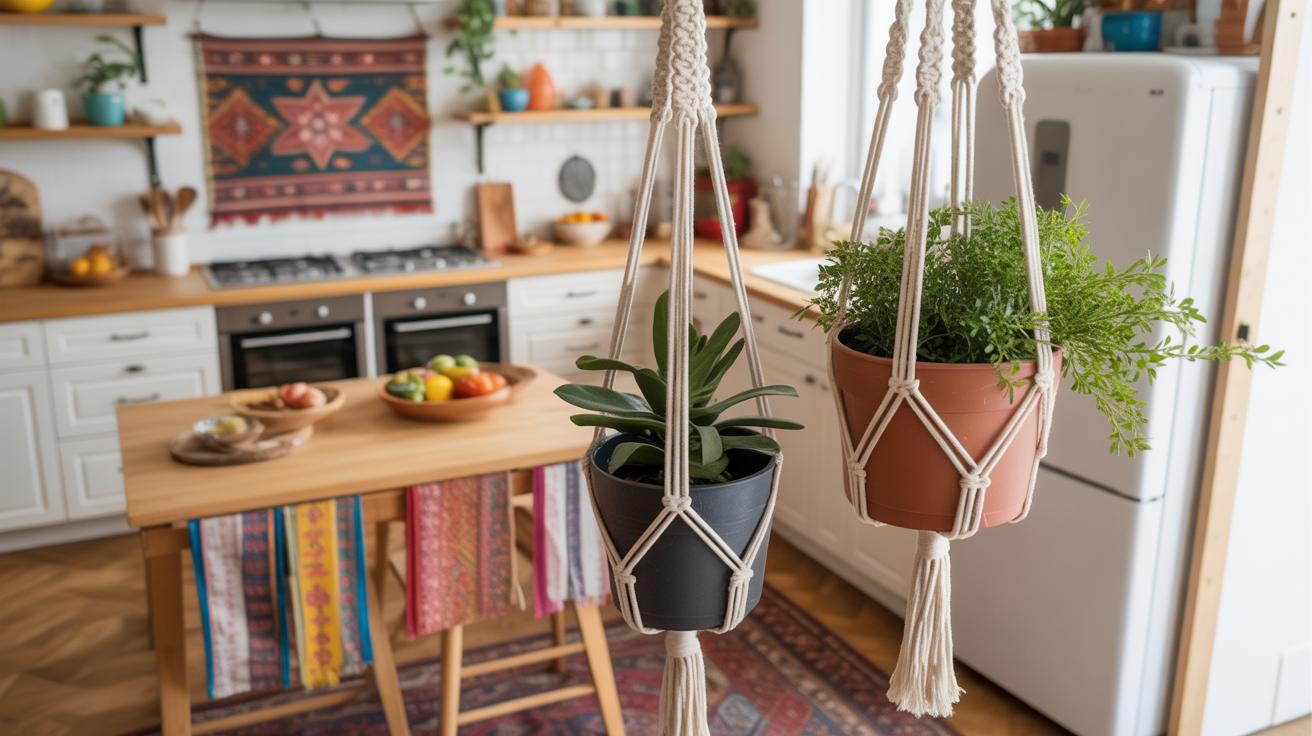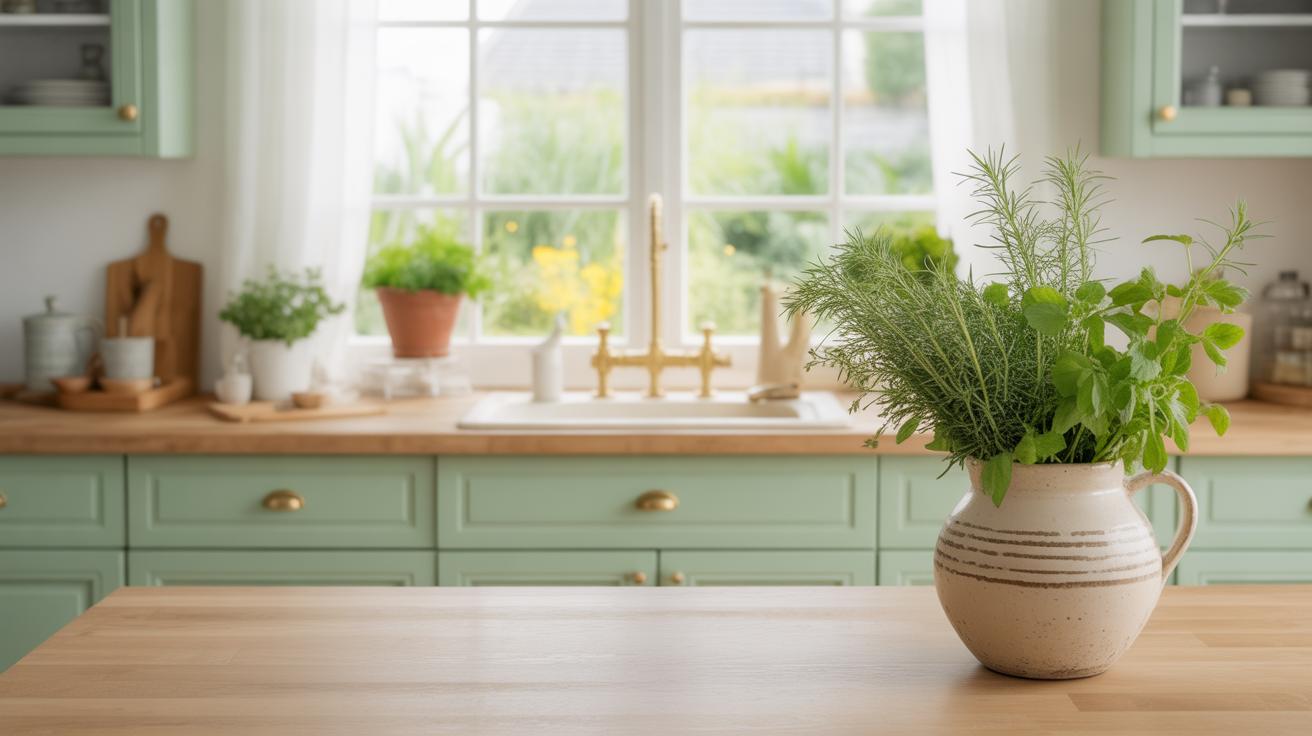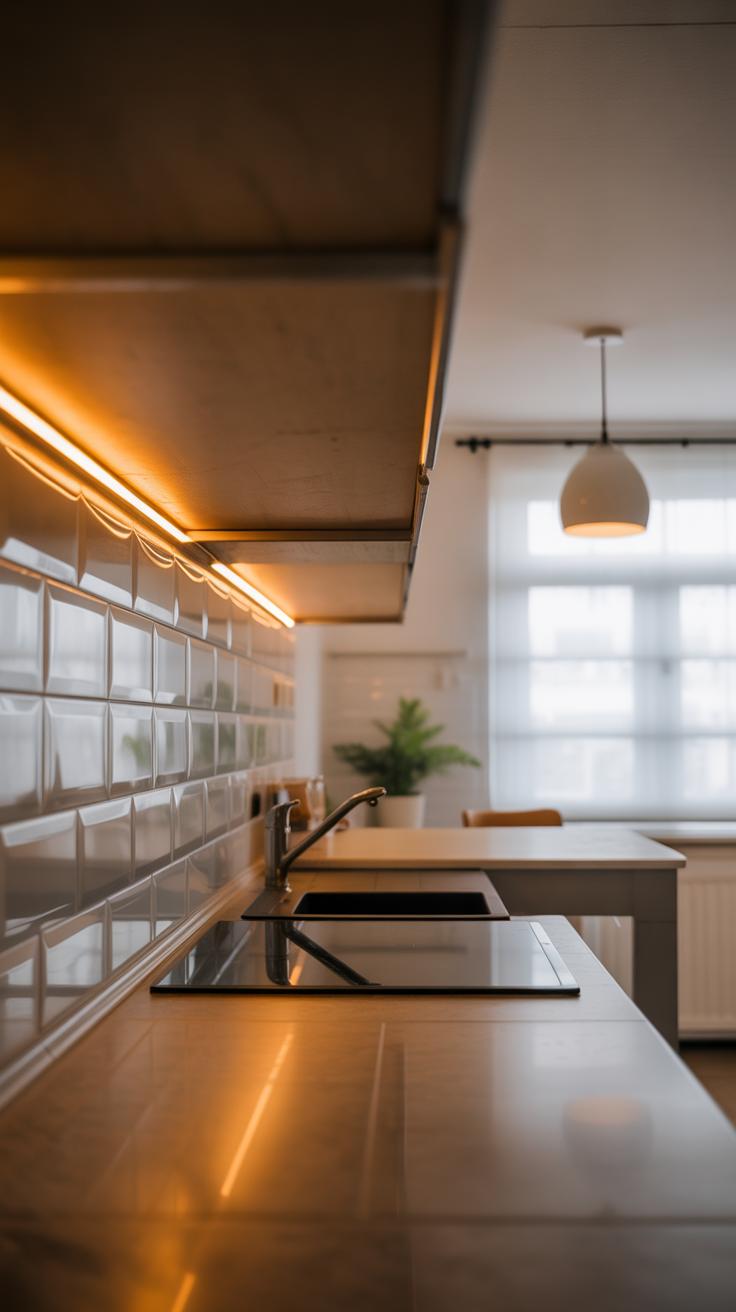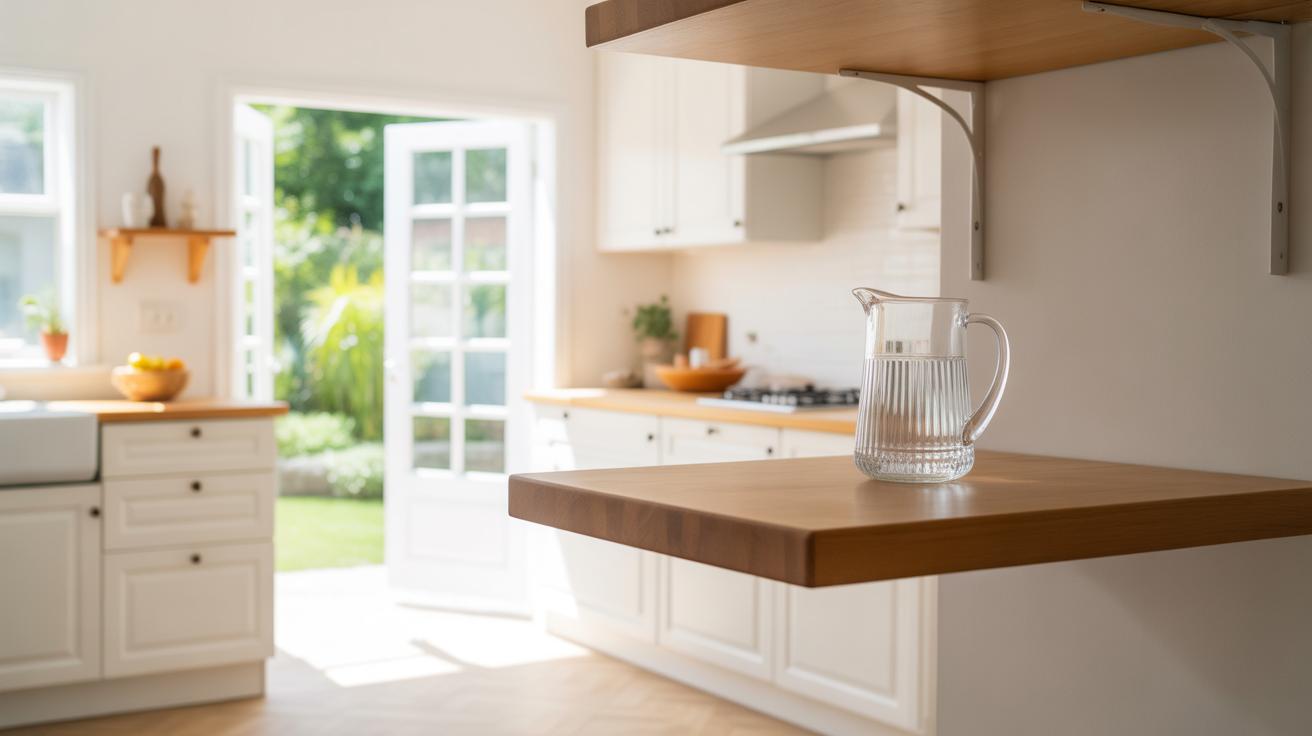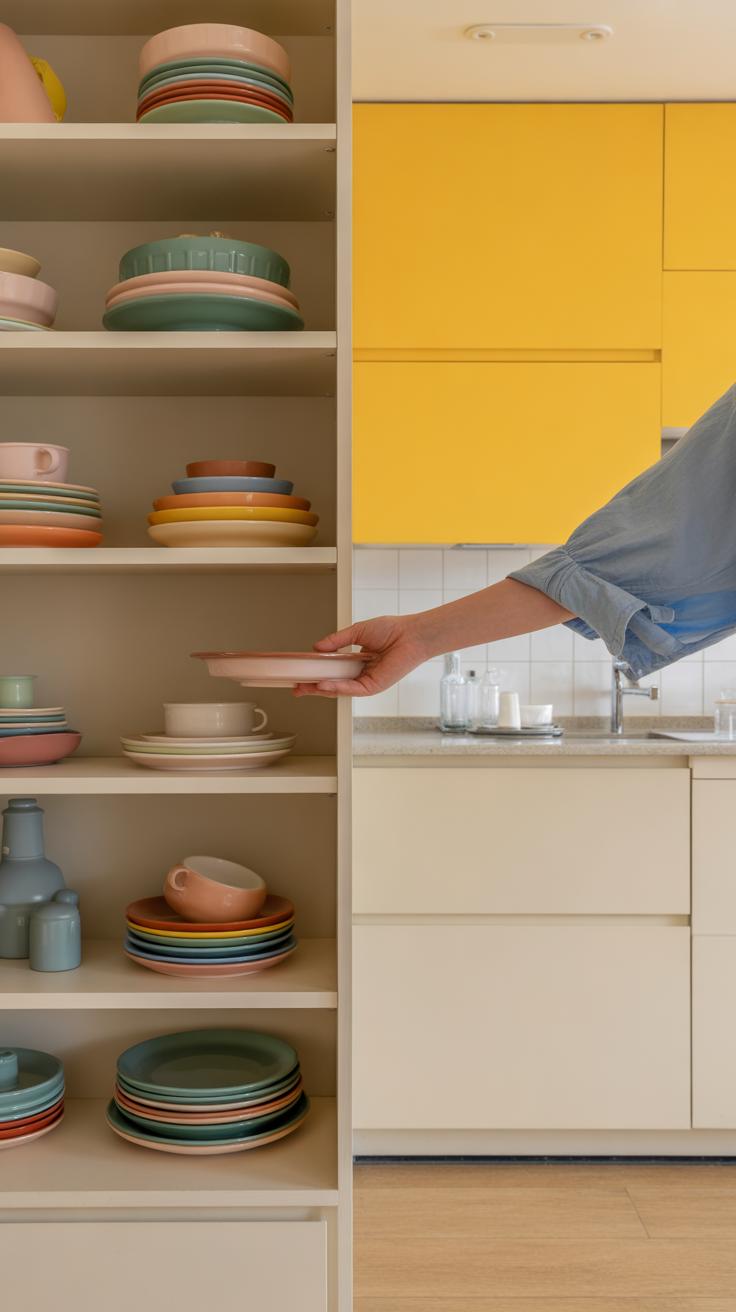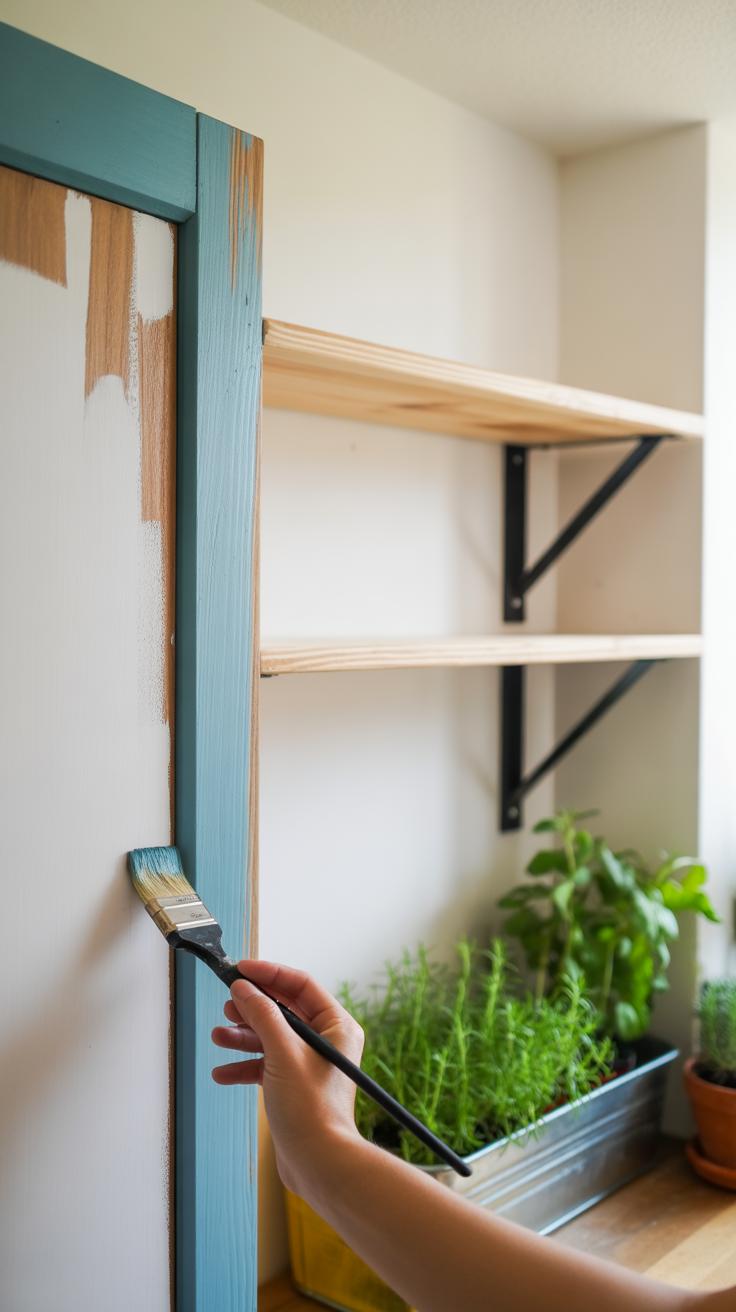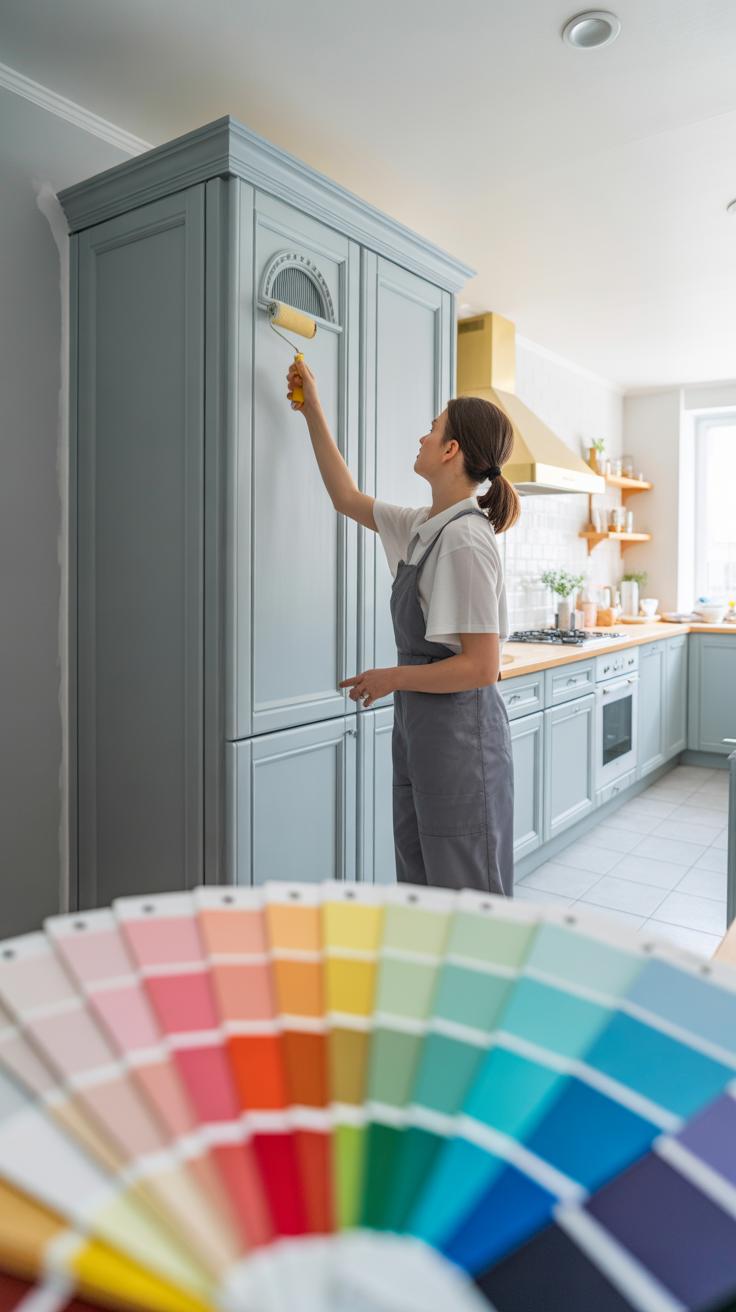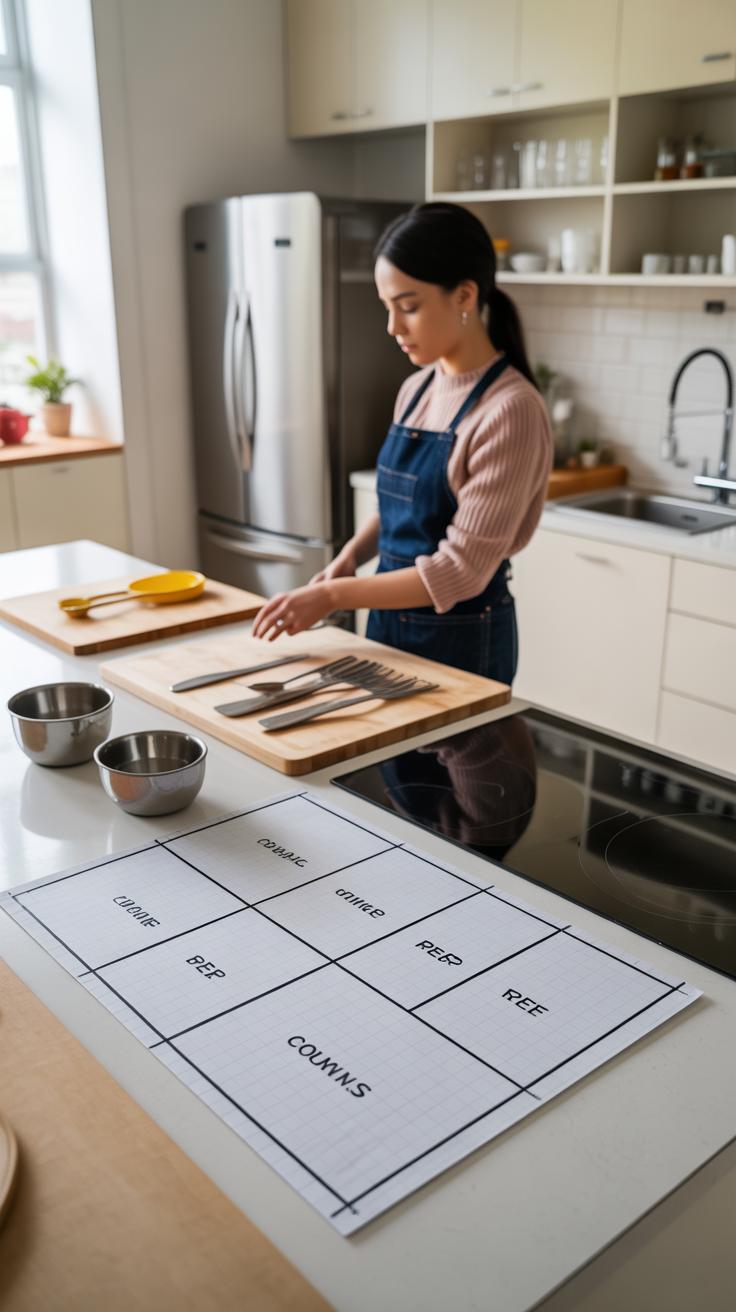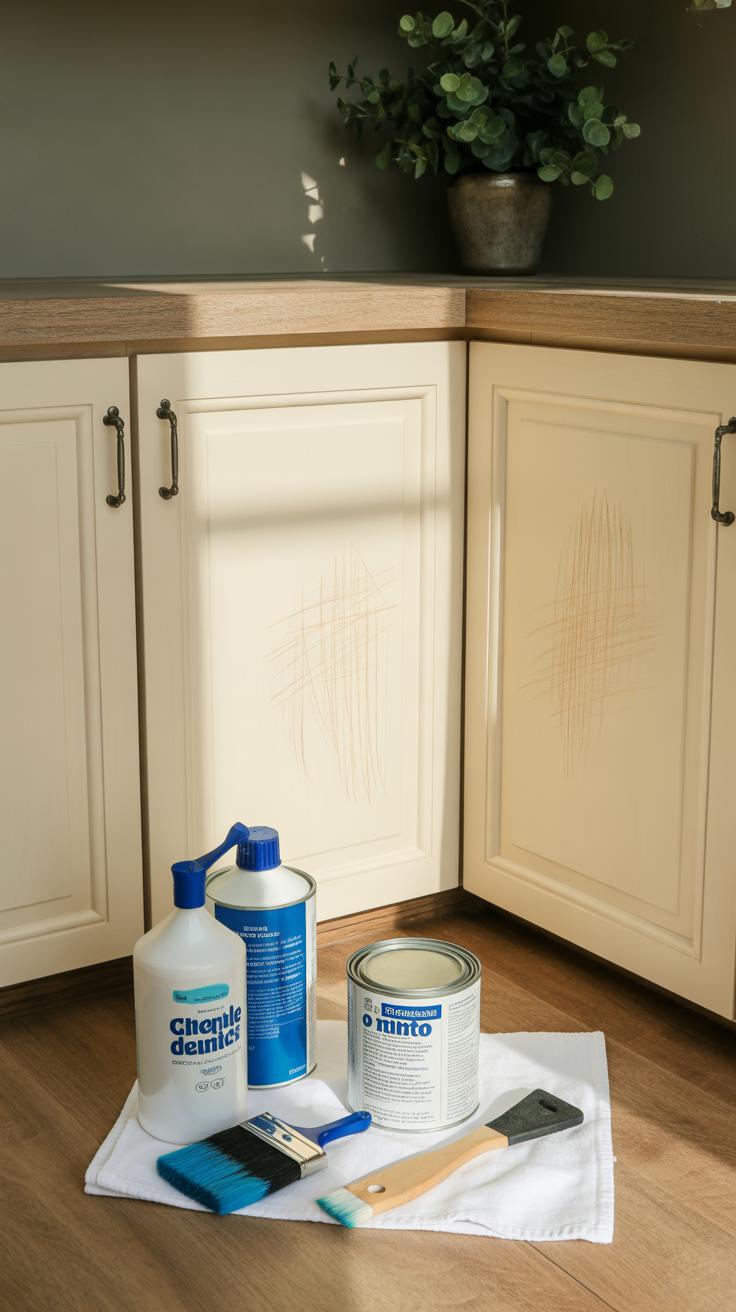Introduction
Designing a kitchen that offers both space and function can be a challenge, especially when working with a limited budget. Yet, a well-planned kitchen can improve your daily cooking experience and bring more order to your home. This article explores practical kitchen designs that make the most of your available space.
You will learn practical tips that help create a comfortable and efficient kitchen without spending too much money. From clever layouts to affordable materials and smart storage, these ideas will guide you to a kitchen that fits your lifestyle and budget.
Understanding Your Kitchen Space
Before diving into any kitchen project, measuring your space matters more than you might guess. Knowing the exact size and shape of your kitchen helps you avoid mistakes that could be expensive or frustrating later. It’s not just about the overall square footage either. Those little details like where windows sit or how wide doorways are can change what fits and what doesn’t.
To measure properly, grab a tape measure and jot down the lengths of each wall, paying attention to corners and angled sections. Don’t forget the height and placement of windows and doors, plus where appliances like your fridge, stove, and dishwasher currently stand. This can feel tedious but trust me, skipping this step often leads to awkward gaps or pieces that just won’t fit.
Now, when you think about kitchen layouts, these measurements really guide your choice. A U-shaped kitchen might be just right for a larger or more square space, wrapping counters around three sides. But if your kitchen is narrow, a galley layout—with two parallel counters—can work better. For a modest to medium-sized rectangular room, L-shaped setups fit nicely, opening the center for movement.
Each layout shapes how you move through the kitchen—the triangle between fridge, stove, and sink is a classic reminder of this. A badly chosen layout could mean bumping into corners or unnecessary steps. So consider your daily routines, and how space feels when you cook or clean. Sometimes the smaller layout offers a smoother workflow than a sprawling one.
Maximizing Storage with Smart Solutions
Small kitchens always feel like a puzzle, don’t they? Finding the right storage can change how you use the space completely. Practical ideas that keep clutter at bay are key. Think beyond just shoving everything into drawers or cabinets.
One thing I’ve noticed is how simple labeled baskets or clear containers can make a big difference in finding items faster. When everything has a spot and you can actually see it, you avoid digging through piles of stuff. It might sound obvious, but it really helps keep counters clear.
Another approach I’ve tried is grouping similar items together—like all baking ingredients in one shelf or all spices in a single drawer. When you reach for what you need quickly, cooking becomes less of a chore. Maybe small kitchens demand this kind of disciplined order, but it often feels worth the little effort.
Using Vertical Space
Walls aren’t just for decoration, and they’re great for adding storage without using up precious floor space. Shelves are an easy fix—floating or wall-mounted, they open up a lot of room for dishes, cookbooks, or even potted herbs. Sometimes just one or two well-placed shelves transform a cramped corner.
Hooks can be just as useful. Hanging pots, pans, or utensils frees up cabinet room and keeps things within reach. Tall cabinets stretch all the way up toward the ceiling, taking advantage of otherwise wasted space. Though reaching the top shelves might require a step stool, they’re great for things you don’t need every day.
I do wonder if people sometimes overlook vertical space because it feels less accessible or harder to keep tidy. But with a little planning, it can really relieve pressure on lower storage.
Organizers and Pull-Out Features
Inside cabinets and drawers, a few thoughtful accessories can make a big difference. Pull-out shelves let you slide items forward, so nothing gets lost in the back. They’re easy to install and don’t cost much.
Lazy Susans—those spinning trays—work well in corner cabinets or pantries, letting you reach everything without knocking over the whole shelf. Dividers help too, especially for separating utensils or cutting boards where piles otherwise tangle together.
Sometimes I debate if all these gadgets are worth it. They take up some space themselves, but overall, they seem to save time and frustration. Could these little extras give you a smoother kitchen routine without breaking your budget? I think so.
Selecting BudgetFriendly Materials
When it comes to kitchen cabinets, there are several affordable options that don’t look cheap at first glance. Thermofoil, for example, offers a smooth, uniform finish and is easy to clean. It holds up reasonably well in moisture-prone areas but can peel if scratched badly or exposed to heat near ovens. Laminate cabinets can mimic wood grain or even stone patterns without the cost—plus, they’re scratch resistant. Yet, they might chip or swell after water exposure, so sealing edges matters.
MDF cabinets are another choice. They provide a solid, smooth base for paint and come in various styles. The downside? MDF can swell when wet and may not be as durable over time, especially in busy kitchens. Still, compared to solid wood, it’s hard to beat on price.
For countertops, laminate remains a popular budget pick. It comes in countless colors and patterns and is simple to maintain. Few realize how far laminate has come—it can often fool people into thinking it’s a pricier material. Tiles are another option; they let you DIY in sections and repair just the damaged tile if needed. But grout lines might stain or require regular cleaning, which can bother some.
Flooring choices like vinyl and laminate suit small kitchens well. Vinyl comes in sheets, planks, or tiles, offering good water resistance and a soft feel underfoot. I once chose vinyl for a tiny space and appreciated how it tolerated spills without fuss. Laminate flooring looks similar to hardwood but costs less and installs quickly. Still, it doesn’t always handle water as well as vinyl, so consider your kitchen’s moisture levels.
Picking materials means weighing cost, appearance, and durability against your lifestyle. What matters more: a slick look today or something that withstands wear for years? Sometimes the cheap option might mean extra maintenance, but it also frees up budget for appliances or smart storage—doesn’t that count for something?
Choosing Kitchen Appliances Wisely
Picking appliances for a small kitchen on a budget isn’t just about size or price. You want them to work well without crowding your limited space. What matters most is balancing what you use daily against what can be left out or combined into one device. For example, a slim dishwasher can fit under a counter and save time, but only if you really need it.
Think about your daily cooking habits before buying. Do you bake often, or is a microwave enough? Will a smaller fridge mean more frequent grocery trips? Sometimes going compact means you give up a bit of capacity, but the trade-off might open up space elsewhere.
Compact and Multi-Use Appliances
Compact appliances are designed for small kitchens, but some go beyond just being small. Multi-use gadgets help save space and money, even if they take some getting used to. Consider:
- A microwave-convection oven combo—roasts, bakes, and reheats without needing multiple units.
- Two-burner cooktops instead of four, freeing counter space for prep or other appliances.
- Compact dishwashers, which save water and fit small cabinets, ideal if you don’t have a big family.
- Countertop appliances like an instant pot or air fryer that replace multiple cooking tools.
Personally, I found a toaster oven that also broils and bakes. It saved me from buying a separate oven, which mattered because my kitchen barely had room for another bulky appliance.
Energy Efficiency and Cost Savings
Buying energy-efficient appliances might feel pricey upfront. But they often pay for themselves over time with lower bills. Plus, they tend to work better than one might guess, using technology that controls power without compromising performance.
Look for the Energy Star label or similar ratings. Think beyond the sticker price: a fridge that uses less power cuts your electricity costs and may avoid costly repairs down the line. The key is to balance short-term budget limits with long-term savings. It’s tricky, and you might hesitate at first, but the right choice helps both the environment and your wallet.
Still, some energy-saving models come with fancy features you don’t really need. Sometimes simpler is better—and cheaper. It’s okay to skip extras if they add little value in a tight space.
Lighting For Function And Ambiance
Task Lighting for Cooking Areas
Lighting your kitchen well doesn’t have to break the bank, especially when you want to focus on where you actually work. Under-cabinet LED strips are a popular choice—and for good reason. They provide direct light on your countertops, where chopping and mixing happen, without creating harsh shadows. I once swapped out a bulky fluorescent fixture for simple LED tape, and it felt like a whole new kitchen.
These strips are easy to install yourself, often with adhesive backing, and consume very little electricity. Plus, many come with dimming or color options, which lets you fine-tune your space without extra expense. If strips seem too much, small puck lights or stick-on battery-operated lights can work too, especially in tight spots. The key is to light tasks, not just the room, because good task lighting reduces mistakes and eye strain while cooking.
Ambient and Accent Lighting
You might think ambiance lighting means buying fancy fixtures, but there are simpler ways. A centrally placed ceiling fixture with an LED bulb can gently brighten the whole kitchen. Look for options with diffusers or frosted glass to avoid glare. Pendant lights are trendy, sure, but a classic flush-mount light can suit a small kitchen and a budget just fine.
Don’t overlook lamps—yes, lamps—in small kitchens. Table or floor lamps in corners create a warm glow. You might wonder about electricity and space, but even a plug-in wall sconce could add depth without rewiring. Accent lighting doesn’t need to be flashy; sometimes, a well-positioned lamp or a string of small lights tucked under a shelf can boost atmosphere and make the kitchen feel welcoming after hours.
Open Shelving Versus Cabinets
Benefits of Open Shelving
Open shelves make everything easy to reach. When you’re in a small kitchen, not having to open cabinet doors saves time and effort. Plus, seeing your everyday dishes or spices out in the open can feel more welcoming, maybe even a bit personal. It also encourages you to keep items tidy—clutter just doesn’t look good when it’s all visible, right?
But open shelves do need some upkeep. Dust settles faster, and you’ll want to wipe surfaces regularly. If you’re like me, it’s a little annoying at first, but the payoff is a kitchen that feels airy and open.
Open shelving shines if you’ve got nice dishes you want to display or if decorating is part of your kitchen vibe. It’s an affordable way to change the look without major renovations.
When Cabinets Work Best
On the flip side, cabinets hide everything you don’t want on show. If you’re dealing with kids’ clutter or just a bunch of mismatched stuff, closed storage keeps the kitchen looking clean. It’s also better for blocking out dust and grease, which can sneak onto open shelves easily.
Cabinets help when you need clear organization—grouping items by use or type without worrying about how they look at first glance. It’s sometimes easier to store larger or oddly shaped items behind closed doors than on open shelves.
So, if you’re not super bothered by the extra step of opening doors or if you want a more uniform appearance, cabinets may just be the way to go. They can feel more traditional, but that can be exactly what a busy kitchen needs.
Incorporating Affordable DIY Elements
There’s something satisfying about tackling a kitchen upgrade yourself. You don’t need fancy tools or a big budget to make a difference. Simple DIY projects can change how your kitchen looks and feels, without stretching your wallet.
Take storage, for example. You can build your own shelves from inexpensive wood planks or even repurpose crates. A basic spice rack made from wooden dowels or small jars glued to a board easily keeps your spices within reach, cutting down on clutter. Drawer organizers? Cardboard or thin plywood can be turned into compartments, helping you find your utensils quickly.
Painting is another simple way to refresh the kitchen. A coat of paint on your cabinets or walls can brighten dark corners or add a touch of personality. Maybe you just update cabinet handles or add a new backsplash with peel-and-stick tiles. These small efforts add up, making your space look cared for without the cost of a full remodel.
It’s tempting to think bigger is better, but sometimes the smallest projects bring the biggest change. What’s one DIY task you could start this weekend to ease your kitchen chaos?
Choosing Colors To Enhance Space
Light and Neutral Colors
Light colors do more than just brighten a room—they actually create an impression of openness that small kitchens desperately need. Whites, creams, pale grays, or soft beiges reflect natural and artificial light, making walls seem to recede instead of crowding the space. This effect isn’t just about perception; it can change how you experience your kitchen daily. When I painted my own tiny kitchen in a gentle white, the difference was noticeable. The space felt less cramped, almost as if the ceiling lifted a bit. On a tight budget, paint is an inexpensive option to refresh your kitchen’s feel. It’s quick, and the payoff? Significant. You don’t have to stick to stark white—experiment with warm neutrals or very light pastels to bring softness while keeping things airy.
Using Color Accents
Throwing in some color accents can stop your kitchen from feeling too plain. But here’s a tricky part: too much color might overwhelm the limited space rather than enhance it. Instead, go for small, carefully chosen pops of color that invite the eye without dominating. Think of a vibrant backsplash behind the stove, or bright utensils hanging on a rail. Perhaps a colorful kettle or toaster? These accents are easy to swap out when you want a fresh look; they also keep costs down compared to big permanent changes.
Adding color in accessories also lets your personality peek through. I once added cobalt blue mugs and a matching dish towel to my mostly white kitchen—it felt welcoming without cluttering. The key is balance. Where might you place a splash of color in your kitchen, without making it feel smaller? Sometimes a single bold accent piece goes a long way without leaving your space feeling busy or boxed in.
Creating Functional Zones
In small kitchens, defining distinct zones for cooking, prepping, and cleaning can help you move around much better and avoid that frustrating cluttered feeling. When you clearly separate these areas, your kitchen workflow tends to flow more naturally—even if space is tight.
Think about your everyday routine. You usually start by grabbing ingredients from the fridge, then chopping or mixing on the counter, and finally cooking at the stove. After that, there’s cleanup at the sink. Setting up these specific zones where you store related tools and appliances means you won’t be scrambling for things mid-task.
Work Triangle Concept
The “work triangle” is an idea that might sound a bit old-school but still makes sense for small spaces. It’s basically the path between the refrigerator, stove, and sink. In a well-arranged kitchen, these three spots form a triangle that lets you move easily without walking too far or getting stuck.
For example, if your refrigerator is at one end, stove in the middle, and sink at the other end, you’ll avoid unnecessary back-and-forth trips. The key is to keep this triangle compact but not cramped—think of it like a practical loop that saves steps and time.
Zoning Tips for Small Kitchens
Even if your kitchen is tiny, you can still create clear zones. Here are some practical tips worth trying:
- Keep frequently used tools like knives, cutting boards, and mixing bowls near the prep area.
- Place cleaning supplies like dish soap, sponges, and trash bins close to the sink zone.
- Store pots, pans, and cooking utensils near the stove for quick access.
- Use small shelves or wall hooks to separate zones visually and physically without taking extra floor space.
- Consider multi-use spaces—for instance, a countertop that’s used for prep but clears quickly to serve as a dining spot.
One thing I’ve found is that even a small, labeled basket or drawer can help you mentally and physically separate zones. It’s kind of surprising how something that simple makes the kitchen feel less chaotic. Have you tried zoning your kitchen before? What worked—or didn’t?
Maintaining Your Kitchen On A Budget
Keeping your kitchen clean and functional doesn’t have to drain your wallet. Regular cleaning and small fixes actually save you money over time by stopping issues before they grow. Think of it like this: wiping spills as soon as they happen prevents stains or damage that might require costly repairs later. It’s a routine task, but skipping it can make your kitchen look tired faster.
Small repairs, like tightening cabinet hinges or replacing worn-out weather stripping, often take just minutes and basic tools you probably already have. These quick jobs avoid bigger headaches, like sagging doors or drafts that push up your energy bill.
Simple upgrades can refresh your kitchen without spending much. Swapping old drawer pulls or knobs for new ones can change the whole feel of your cabinetry. Reapplying sealant around sinks and backsplashes guards against water damage without calling a pro. Sometimes, just a bit of paint touch-up or fixing a loose tile makes things feel new again.
Have you noticed a minor leak or a squeaky drawer? Those are good entry points. Tackling these early can also give you a sense of control and care over your space. It’s a bit like checking in on your kitchen, whether you love it or aren’t quite sure where to start.
Conclusions
Choosing the right kitchen design does not mean breaking your budget. Small changes like rearranging your layout or adding smart storage can open up space and boost functionality. Using affordable materials and DIY options also helps keep costs down while freshening your kitchen.
Think about how you use your kitchen and what features you need most. Your kitchen should work for you, making cooking easier and more enjoyable. Start with simple steps and let your new kitchen meet both your needs and your budget.

